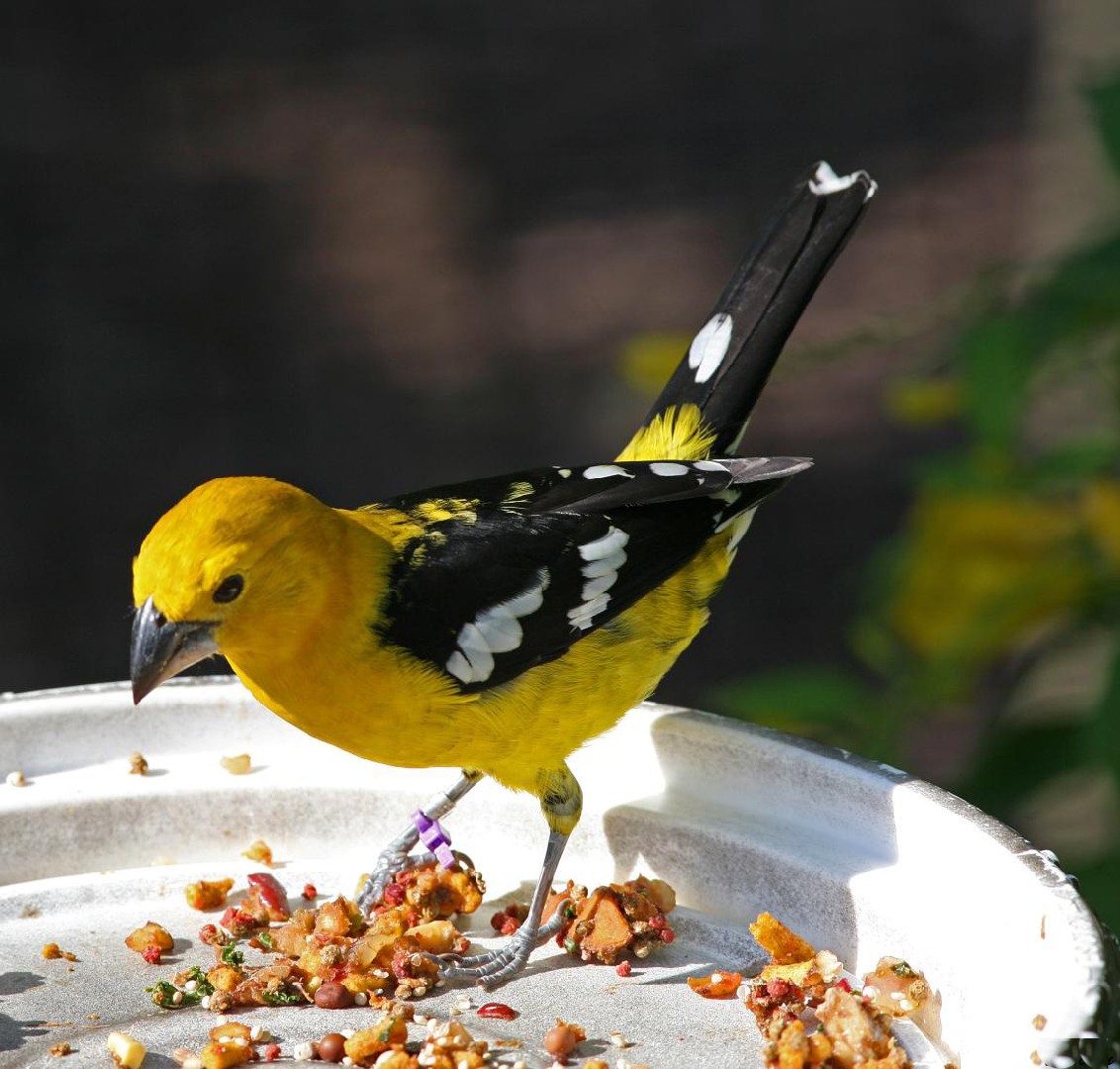Yellow Grosbeak
A species of Typical New World Grosbeaks Scientific name : Pheucticus chrysopeplus Genus : Typical New World Grosbeaks
Yellow Grosbeak, A species of Typical New World Grosbeaks
Botanical name: Pheucticus chrysopeplus
Genus: Typical New World Grosbeaks
Content
Description General Info
Description
The yellow grosbeak (Pheucticus chrysopeplus), also known as the Mexican yellow grosbeak, is a medium-sized seed-eating bird in the same family as the northern cardinal, "tropical" or "New World" buntings, and "cardinal-grosbeaks" or New World grosbeaks. The yellow grosbeak occurs on the Pacific slope of Mexico from central Sonora to northwestern Oaxaca, and in southern Chiapas and Guatemala. In Sonora, it is migratory. It has been considered conspecific with P. tibialis of Central America and P. chrysogaster of South America. It occurs mostly in trees in forest, woodland, and edge, but is generally not found in dense rain or cloud forests. Occasional vagrants have reached the United States, mostly in summer in Arizona, but it has also been reported in California, Colorado, New Mexico, and even Iowa. It is considerably bigger than its North American congeners, the black-headed grosbeak and the rose-breasted grosbeak, being about 21.5–24 cm (8.5–9.4 in) long and weighing on average 62 g (2.2 oz). The head is "massive", and the gray-black bill is even bigger in proportion to the head than those of its northern relatives. The plumage has bold contrasts of yellow, white, and black or gray. Males' head and underparts are solid yellow—light lemon in most populations, "brilliant golden-orange" (Howell and Webb 1995) in P. c. aurantiacus of Chiapas and Guatemala. The back is black with yellow mottlings, the rump is yellow, and the upper tail coverts are black with white tips. The wings and tail are black with conspicuous white spots, patches, and wingbars. Females are similar but the upperparts are more olive, with dark streaks on the crown and back. Black is replaced by gray, and the white markings on the wings, especially the white base of the primaries, are smaller. Females are very similar in pattern to female flame-colored tanagers, but much bigger, especially as to the bill. Immatures resemble females overall. Typical calls are a metallic iehk or plihk (Howell and Webb) or piik resembling other Pheucticus grosbeaks' calls, and a soft whoi or hu-oi (Howell and Webb 1995) or hoee (Sibley 2000) often given in flight. The song is a variable, rich-toned warble resembling that of the black-headed grosbeak, but shorter. As is typical of the genus, it lays two to five pale bluish to greenish eggs with heavy brown and gray speckling. The cup nest is built at medium height in a bush or small tree. 
Size
23-24 cm (9-9.5 in)
Nest Placement
Tree
Feeding Habits
Yellow Grosbeak's diet primarily consists of fruits and nectar. This bird species exhibits foraging behavior, seeking out these food sources in its habitat. It is particularly adapted to consuming a variety of fruits, indicative of its specialized feeding preferences.
Habitat
The yellow Grosbeak typically inhabits tropical deciduous and semi-deciduous forests. They are also found in well-wooded watercourses, scrubby woodlands, and thorn forests, often frequented by the birds for nesting and foraging. Additionally, some subspecies may dwell in the clearings of humid evergreen forests. The habitat range for yellow Grosbeak extends from sea level up to 2500 meters in elevation, emphasizing their adaptability to various montane environments across broad tropical regions.
Dite type
Granivorous
General Info
Feeding Habits
Bird food type
Bird Feeder Type

Platform

Large Hopper
Sounds
Song
Recording location: United States
Species Status
Not globally threatened.
